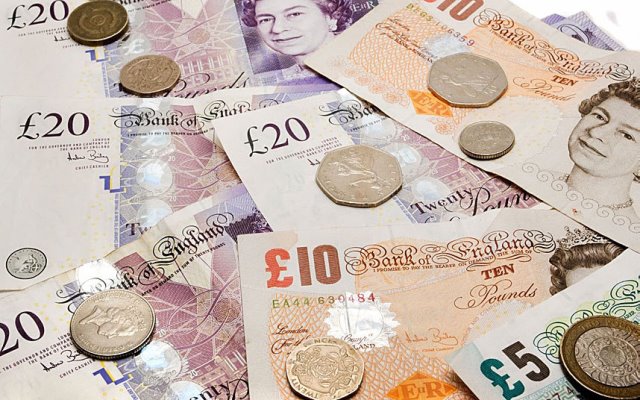The pound found some solace on Friday after a leading eurosceptic minister pledged support for Britain’s embattled premier Theresa May, who struck a defiant tone despite strong opposition to her Brexit deal.
News that Environment Secretary Michael Gove would stay in the cabinet outweighed a growing plot to force May out of her job through a no-confidence vote.
Sterling suffered its largest one-day drop in two years versus the euro and the dollar on Thursday after a wave of ministers opposed to May’s Brexit deal with Brussels resigned.
The resignations and May’s precarious position left investors panicking that Britain could exit the European Union without any agreement.
Trading on Friday was calmer, with the pound helped by some selling in the dollar, but the currency remains at the mercy of May’s fortunes.
The pound rallied on Friday as May vowed to stick to her plan and take Britain out of the EU in March.
The move higher was aided by comments from Federal Reserve officials about slowing global growth, which raised doubts about the number of future U.S. interest rate rises and hurt the dollar on Friday.
Sterling was up 0.6 percent to $1.2846 at 1540 GMT after earlier hitting as high as $1.2877.
Versus the euro it gave up earlier gains and traded flat at 88.715 pence.
Analysts said the pound would remain under pressure so long as May and her Brexit proposals were at risk.
“The best deal Britain could negotiate might not win the approval of parliament when they vote on it in early December,” said Marshall Glitter, chief strategist at ACLS Global.
“If that happens, what next? They crash out of the EU with no agreement? More uncertainty and the possibility of an even worse outcome inevitably leads to a sharply lower pound.”
BRACING FOR MORE SWINGS
With possible outcomes for Britain now ranging from a “hard Brexit” to a general election and a second Brexit referendum, investors are expecting more rocky days ahead.
One-month implied volatility for sterling overnight – a measure of investor expectations of future swings in the price of the pound – rose to as high as 15.1 percent, the highest since July 2016. It was set for its biggest weekly rise since the June 2016 Brexit referendum.
By comparison, one-month implied volatility in the Turkish lira, one of the most volatile emerging market currencies, stands at 17.9 percent.
One-month implied volatility in sterling versus the dollar is higher than in the Brazilian real.
“Sterling volatility has woken up from its 100-year slumber and is likely to remain reactive,” said Ulrich Leuchtmannan, FX strategist at Commerzbank.
Fears that May’s hard-fought Brexit deal could collapse sent British financial markets into gyrations not seen since the sell-off following the referendum.
British stocks sank, as did gilt yields.
The darkening outlook for Britain’s economy was reflected in the money markets, where investors no longer expect an interest rate increase by the Bank of England next year.














